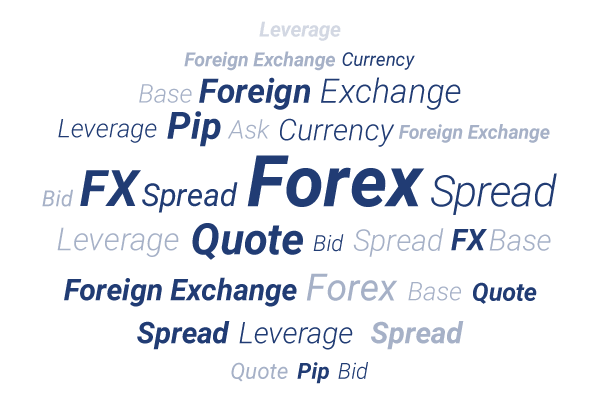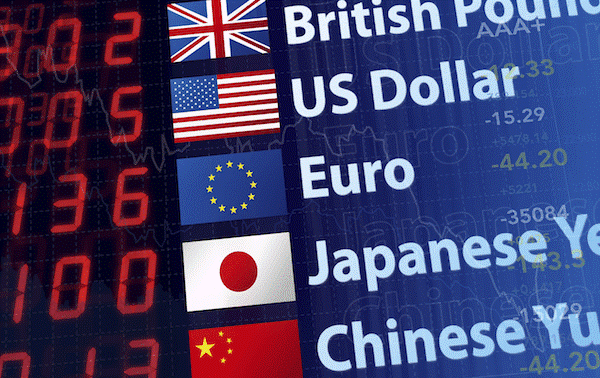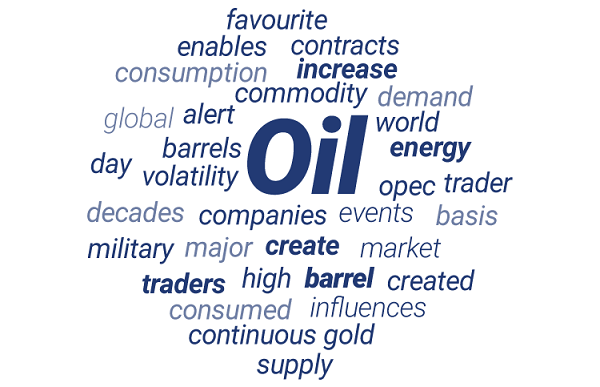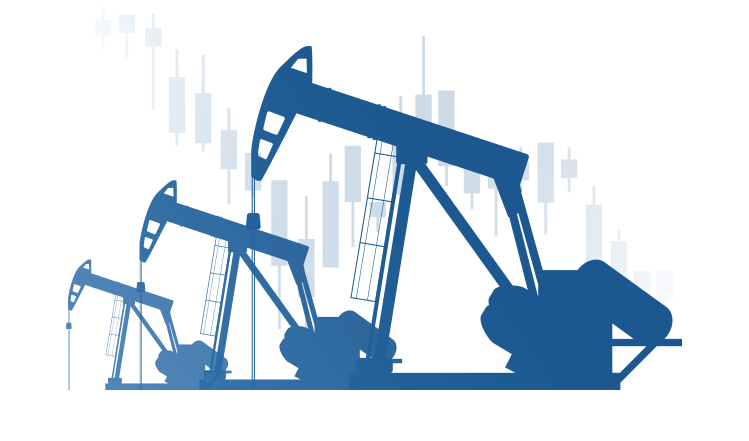Education
We have a wide range of educational training and trading resources to provide you with high calibre analysis and in-depth knowledge of the markets.
For those who are just starting out, we have created a comprehensive beginner's guide that introduces you to forex terminology, answers frequently asked questions, and most importantly, makes it easy to understand.

What is Forex Trading
Foreign exchange trading generally refers to the conversion of one country's currency into another country's currency. With the normalisation of international exchanges in recent years, foreign exchange transactions are becoming more and more closely linked to our lives, whether it is import and export trade, or to send their children to study abroad, travel and so on may involve the use of a currency into another country's currency.
Exchange rate formation
The exchange rate is known as the ‘foreign exchange market or exchange rate’. It is the rate at which one country's currency is exchanged for another country's currency, and is the price of one currency expressed in terms of another currency. Since currencies around the world have different names and different values, a rate of exchange, or exchange rate, is set for one country's currency against the currencies of other countries.
The seven major currencies of the international currency market
There are about two hundred currencies in the world, but one of them has a wide circulation of the currency is only about ten, which is developed in the seven countries (or region) of the currency of the most circulating value, so in the foreign exchange market, these currencies are also the most frequent transactions, including the U.S. dollar (USD), the Japanese yen (JPY), the pound sterling (GBP), the euro (EUR), the Swiss franc (CHF), Canadian dollar (CAD) and Australian dollar (AUD).
As currency trading must involve the simultaneous purchase and sale of two different currencies, i.e.: currency trading is to exchange one currency for another, so in the purchase of a certain currency at the same time, the trader must also sell a certain currency. In this way, currency trading will have the concept of currency pairs, and the aforementioned seven major currencies traded with each other, also constitutes the foreign exchange market commonly known as the six major currency pairs, including the euro / dollar (EUR / USD), the U.S. dollar / Japanese yen (USD / JPY), the British pound / U.S. dollar (GBP / USD), the U.S. dollar / Swiss franc (USD / CHF), U.S. dollar / Canadian dollar (USD / CAD) and the Australian dollar / U.S. dollar (AUD / USD). ), and Australian Dollar/US Dollar (AUD/USD), among others. Trading in these major currency pairs accounts for the majority of the international foreign exchange market volume.
How foreign exchange is denominated
The direct mark-up method, also known as the payable mark-up method, uses a certain unit of foreign currency as the standard to calculate how many units of domestic currency are payable, which is equivalent to calculating how much local currency is payable for the purchase of a certain unit of foreign currency, hence the name payable mark-up method. The vast majority of countries in the world, including China, are now using the direct markup method. In the international foreign exchange market, the Japanese yen, the Swiss franc, the Canadian dollar and so on are direct markup method.
For example, a USD / CHF exchange rate of 0.8844 means that it takes 0.8844 CHF to exchange 1 USD.

Characteristics of each currency pair
EUR / USD Eurodollar - Steady
The euro is the second most traded currency after the US dollar on a daily basis, and with a fairly stable monetary policy, the market is relatively stable.
GBP / USD British Pound US Dollar - Fast
The value of the British pound is very high, and used to be the world's currency. Speculation time is long, do disc set more, short-term trend on the dry and sharp never dragged mud, is the short-term traders love currency.
USD / CHF US Dollar Swiss Franc - Follow
Switzerland is a small country with not much to write about. Due to its location in Europe, it mainly follows the euro, mostly in the middle of the road, and shows off its personality a little bit.
AUD / USD Australian Dollar US Dollar - Business
Typical of commodity currencies, they can rise sharply when commodity markets are good and fall sharply when commodity markets are weak.
USD / JPY US Dollar Japanese Yen - Execute
Of the major currencies, the movement of the yen is the most important to be intervened by the Bank of Japan. This is, of course, due to Japan's heavy reliance on its export economy.
Characteristics of the foreign exchange market
Two-way trading opportunities in Forex
Forex trading is a two-way trade that allows you to go long as well as short.
Leveraged forex trading
Leveraged trading is currently the international mainstream means of foreign exchange transactions, through the role of leverage can be the actual transaction amount to amplify, with a ‘small to big’ characteristics (Note: the risk will also increase) in the role of the bar, investors only need to pay a certain margin for 100% of the amount of transactions, which makes the small amount of money investors also have the opportunity to participate in the financial foreign exchange transactions.
Forex Trading Terminology
Spread — The actual currency of exchange of the contract between the buyer and the seller.
Order — An order to be filled at a specific price
Position — Positions held in selected financial products
Leverage — Additivity of total transactions over actual funds data, expressed as a percentage or fraction
Rollover — The actual exchange of currencies between the two parties to a foreign exchange transaction based on a contract
Equity — Net = Balance + Gross profit/loss on open positions
Currency Pair — The two currencies that make up the foreign exchange rate
Rate — The price of one currency expressed in another currency, generally for trading purposes.
From extraction to consumption, oil serves as a feedstock for a number of commonly used products, providing traders with numerous speculative trading opportunities around the commodity and related businesses. Priced per barrel, oil has numerous uses. It can be used as a source of energy for heating homes, as petrol for transport needs, and even as a basic raw material for the ubiquitous plastic. As the world becomes increasingly dependent on the commodity, traders are focusing more and more on the short- and long-term trading value that this ‘liquid gold’ offers.

Main factors affecting the price of crude oil
In July 2008, international crude oil prices hit an all-time high of about US$145/bbl; in April 2020, US WTI crude oil futures were negative for the first time (-US$37.63/bbl), but global spot oil prices did not fall below zero.
1. Supply and demand
Unlike gold (XAU) or other precious metals, oil is a consumable. This means that once it is consumed, more oil must be used to replace it. Uses for petroleum range from film to plastics for military-grade parts, to fuel for transport such as trains, cars, buses and planes.
Its widespread use in modern society has created a huge global demand for this limited resource.
Energy companies are competing to meet the demand for this ‘liquid gold’, with 95.2 million barrels of oil extracted globally per day in 2019, including crude oil, fossil oil, oil sands and natural gas oil. Since the widespread use of fracking in 2006, energy production capacity in the United States has risen dramatically, reaching 12.2 million barrels per day in 2019.
Although trends over the decades have shown that oil consumption is still rising, a range of factors could dampen demand and have a significant impact on traders, such as the 9/11 terrorist attacks in 2001 and the 2020 New Crown Pneumonia pandemic. These major events led to significant cutbacks in flights, airline groundings and unused surplus fuel, among other things. A considerable amount of oversupply will add uncertainty to the oil market.
2. Geopolitical events
While oil production and transport costs have remained relatively stable, geopolitical events can create turbulence in the oil market. As producers and traders are eager to lock in profits, oil prices may fluctuate, rise or fall in line with global events.
For example, military conflict in the Middle East, the world's leading oil-producing region, or changes in political alliances that threaten the flow of that important commodity.
3. OPEC
The Organisation of Petroleum Exporting Countries (OPEC) consists of Algeria, Angola, Congo, Equatorial Guinea, Gabon, Iran, Iraq, Kuwait, Libya, Nigeria, Saudi Arabia, the United Arab Emirates and Venezuela. Established in 1960, OPEC is responsible for reporting the oil production of each member country and coordinating the management of oil production to ensure that oil supply does not exceed demand.
Over the past few decades, Russia and the United States have emerged as major energy producers and are competing with the OPEC organisation for market share.

4. Trading sentiment
As a highly volatile commodity, oil is susceptible to market fluctuations and trader sentiment. This volatility has kept it in favour with traders, but also comes with its inherent risks. Military conflicts, new OPEC output guidelines, or a variety of other global events can cause oil prices to spike or plummet unexpectedly. This constant volatility carries a high level of risk along with profit opportunities, so traders should always remain alert to market movements when trading this commodity.
What is an index?
An index is a statistical measure that tracks the performance of a group of stocks, representing a particular sector of the market or the economy as a whole, and serves as a benchmark for overall market trends and helps investors understand economic conditions.
What are the advantages over investing in an index
Trading equity index derivatives eliminates the need to hold the underlying asset and is a great way to participate in the equity index market.

Trading equity index derivatives is not investing in an index, but rather speculating on the price movements of an index. Whether the price of the index goes up or down, you can capture trading opportunities and realise profits. You can also use leverage to participate in the global equity index market with a fraction of the capital required to invest directly in an index. This not only opens up the world of major stock indices to a wider range of traders, but also provides unique trading opportunities over multiple time periods, especially when combined with reliable technical analysis of index charts.
What are the factors that cause the price of a stock index to move
Equity indices are influenced by a variety of factors. These include economic and political events, consumer confidence, supply and demand, corporate earnings and market news. Investor sentiment towards certain sectors or stocks can also affect major global indices. When trading equity indices, it is vital to keep abreast of the markets in which you are trading.
How to trade indices using Fibonacci retracements
Fibonacci retracement levels a popular technical analysis tool used to identify potential support or resistance levels. When trading stock indices using this method, traders typically look for reversals at Fibonacci retracement levels that coincide with other technical indicators such as candlestick patterns or volume. Traders can then use Fibonacci retracement levels to establish entry and exit points for trades or set stop losses to manage risk. It is vital to test trading strategies on a demo account using technical analysis tools such as Fibonacci retracement levels before trading stock indices with real money.





